10 Things to Know Before Starting With Watercolors
Last Updated: August 29, 2025
Watercolors are one of the most popular arts and crafts tools ever invented. The painting effects, textures, and styles created through watercoloring cannot be matched by any other mixed media tool. If you are a beginner in using this incredible medium, it’s essential to know the basics. In this blog post, we provide 10 things you need to know before you start your watercolor journey!
But before we dive into that, let’s take a quick stroll down its history.
A Brief History of Watercoloring
Believed to have originated in England more than seven hundred years ago, watercolor has a rich history that significantly influenced the art world. Some world-renowned watercolor artists include Albrecht Dürer (who used watercolor for sketches, copies, and informal projects), John James Audobon (who used watercolor painting for his realistic drawings of birds), and William Blake (who had perfected his technique of “fresco”).
Watercolor paint is a distinctive, versatile medium that beginners commonly dread! It gave birth to a new art form that is between painting and drawing. Often regarded as the “unforgiving art,” an artist needs to apply lines, colors, and shapes correctly on their first attempt, or the desired effect will get muddied.

Metallic watercolor pan set from Altenew
What are 10 things you must know about watercoloring, watercoloring techniques, watercoloring ideas, and more?
1. Choose the right paper
Your paper choice often determines the overall result of your watercolor projects. So, choosing the right paper for your watercolor painting is of utmost importance. You can find several types of watercolor paper in the market, and since there is no standard formula for choosing your paper, it boils down to personal preference.
Fundamental factors to consider in your selection:
- Quality (artist-grade or students’ quality)
- Production (handmade, mold-made, machine-made)
- Content (cotton, wood pulp, other cellulose fibers)
- Weight (the heavier, the better, but it is more expensive)
- Texture (hot-pressed, cold-pressed, rough paper)
- Tinting (mostly white or cream)
- Form (rolls, blocks, panels, and paper pads)

Ultimate Liquid Watercolor - Brush Marker Refill Bundle
Watercolor paper is available in separate sheets, bundles, and rolls. When it comes to watercoloring for beginners, it is more economical to buy in bundles that come in different sizes.
2. Granulation
Depending on the project you are creating, granulation is a sought-after characteristic in watercolors. Watercolor granulation is a beautiful effect that happens when pigments clump together, forming rough, mottled washes. These granulating watercolors create delicate textures caused by the components of their pigment.
Artists have different inclinations when it comes to watercolor granulation. Some love the exquisiteness of subtle textures, while others take a pass and prefer smooth, even, and glossy colors for their artwork.
If you favor granulating watercolors, look for man-made paint, known as synthetic organic pigments. This type of pigment usually clusters during production, resulting in varied size and shape after getting broken down by milling. In watercoloring for beginners, it’s good to know this characteristic before you decide on your preference.
3. Swatching
There is nothing more satisfying than swatching watercolors! The swatching process lets you know the color variations and gradations of your chosen watercoloring kit and allows you to test out your watercolor brushes as well. This also enables you to discover variables - from pigment to pigment - that affect your watercolor’s behavior and final appearance. Exploring your paint set allows you to pick the right color palettes/schemes before starting your watercolor art projects.

Remember, unlike acrylics or oils, it is not easy to cover up errors you make with watercolor paints because they are translucent. Other than that, they have water-soluble properties, so they tend to move freely as if they have a mind of their own. Another essential thing to consider is the external factor that can alter your painting process and affect the outcome - water clarity, quality and type of paper, watercolor brushes, and even the room temperature.
4. Choose quality over quantity when it comes to your supplies
You may have heard of the saying “quality over quantity” so many times before. Before you make any purchase, it is wise to ask yourself, “Will this last? Is this a decent quality?” Don’t think that you don’t have to spend more since your cheap art supplies work just fine. Remember this: quality materials matter - not only in watercoloring but in any other hobby or craft.

High-quality materials are commonly known as “artist grade.” Watercolor beginners are often prone to frustration when they start painting. It’s not practical to compromise your practice because your cheaply bought watercolor supplies aren’t working as fine as you thought they’d be. Many artists have realized that they could save more with long-lasting, high-quality materials than with cost-efficient ones that need replacement now and then.
5. Learn the basic techniques
There are so many watercoloring ideas and watercoloring techniques that are best-suited for beginners. To avoid frustration, it is better to start simple and experiment with your watercoloring kit with more uncomplicated techniques. You need constant practice to master the necessary skills required for more complex techniques.
Here are a few easy watercolor techniques for beginners:
- Wet-on-wet
- Wet-on-dry
- Building up colors or color layering
- Creating gradients
- Scribbling
- Ink smooshing

Paint-A-Flower: Anemone Outline Stamp Set
You can use these watercoloring ideas and techniques on various projects, especially handmade cards, scrapbook layouts, and other paper crafting projects. If you want to learn how to start watercoloring for beginners, check out this blog post.
6. Avoid common mistakes
As expected, you will make mistakes as a beginner watercolor artist. Believe it or not, even expert watercolorists still make mistakes. To give you a head’s up, here are the most common watercoloring errors that you should avoid:
- Do not overwork the painting. It’s easier to correct an underdeveloped painting than an overworked one.
- Applying paint into wet washes with a damp brush. If you need to apply a new layer, allow the previous layer to dry completely first.
- Outlining the objects. This will leave your objects looking unnatural and not so smooth.
- Muddy colors. This occurs when you apply paint over a damp layer. Wait until it is completely dry, or add a layer while it’s still very wet (if you’re doing a wet-on-wet technique).
7. Basic Supplies
One of the most important things to remember in watercoloring for beginners is getting some necessary supplies. Before you invest in artist-grade watercolor palettes or brushes, make sure you know these four basic supplies.

Watercolor supplies from Altenew
Here are different types of watercoloring kits for both beginners and professionals:
- Watercolor 36 Pan Set
- Watercolor Brush Markers
- Metallic Watercolors
- Liquid Watercolors
- Essentials 12 Pan Set
- Artist-Grade 24 Pan Set
Choosing the best watercolor paint set depends on your personal preference, budget, and usage. If you are simply testing it out as a beginner, it’s best to get a type of watercolor essentials set with all the primary colors you’ll need. If you’re an intermediate or expert watercolorist, an artist-grade set is a great choice.
8. Essential things to prepare before working on your watercolor art project
Before you jump into trying various watercoloring ideas, it’s crucial to remember and prepare a few basic things such as:
- Get some project reference or project inspiration. Whether you prefer Pinterest or Instagram, you’ll find a cornucopia of watercolor inspiration online. Keep in mind that these are merely suggestions, so there’s no need to copy everything you see.
-
Get out your watercolor supplies. This is pretty much self-explanatory. Always make sure to keep your basic watercolor supplies close, such as your watercolor paint set, watercolor brushes, watercolor paper, etc.
- Set up your work area. Remember to keep your area clean. Having a messy workspace might work for others, but as a beginner, it’s good to have a neat and tidy space to see where things are, and you can avoid spilling paints or water on your surface.
- Prepare your surface for painting. Using a watercolor palette, a crafting mat or a nice and clean flat surface is ideal for watercolor painting. Ensure your surface doesn’t have bumps and curves, as this can affect your artwork’s quality.

Read: How To Create A Dimensional Watercolor Scene
9. Find appropriate and easy watercolor projects for beginners
There are countless watercoloring ideas that you can create for your first projects. You can make beautiful handmade cards, scrapbook pages, art journals, wall decors, and other DIY projects. Here’s a list of easy things to paint:
- Fruits and vegetables
- Flowers
- Potted plants
- Birds
- Little critters
- Simple landscapes
- Trees and leaves
- Foliage
- Sunrise and sunset

Build-A-Flower: Cora Louise Peony Layering Stamp & Die Set
10. Don’t give up too soon!
As you may already know, watercoloring can be tricky because it is such a delicate and fine art. It requires lots of practice, discipline, and focus. Along the way, you may experience disappointments and think that this art is not for you, but remember that no one ever started as an expert in watercolor. Every famous watercolor artist out there started as a beginner. As the famous saying by author and philosopher Elbert Hubbard goes, "There is no failure except in no longer trying.” If it still seems overwhelming, try to watch some watercolor video tutorials, learn watercoloring techniques by signing up for online classes, or attend local workshops around your area! Whatever you do, don't quit too soon!
Are you ready to jumpstart your watercolor journey? We hope you keep these 10 tips and reminders in mind before you dive into the exciting world of watercolors. If you are ready to learn a few simple and easy watercoloring techniques for beginners, check out this blog post. Visit the Altenew store to get your necessary supplies, and drop by the Altenew blog for some watercolor inspiration.



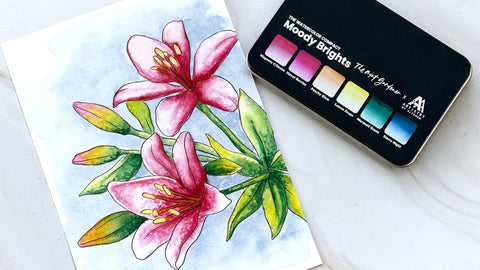





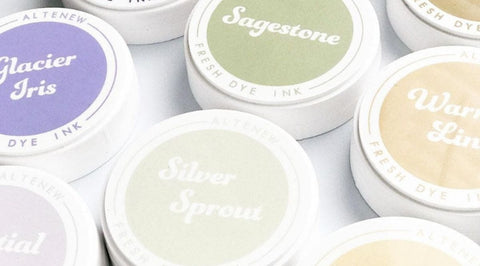
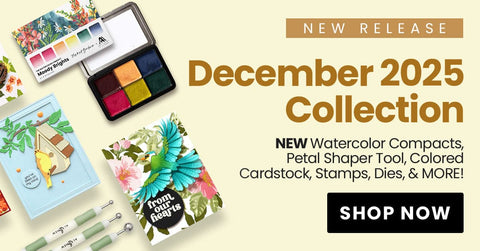
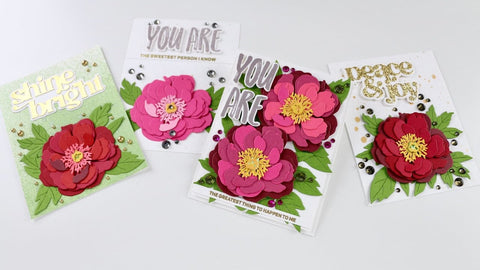
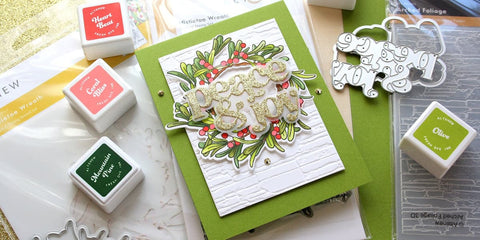



My work finally allows me more free time to pick up a new hobby to indulge in, so I’m considering learning how to paint with watercolor since I’ve always been interested in art. It was a helpful tip when you told us to avoid applying paint into wet washes with a damp brush since we need to make sure the previous layer is dry first before we can add another one. I’ll be sure to remember this while I look for watercolor flower courses I can take for my new hobby soon. https://birgitoconnor.com/flower-painting-courses